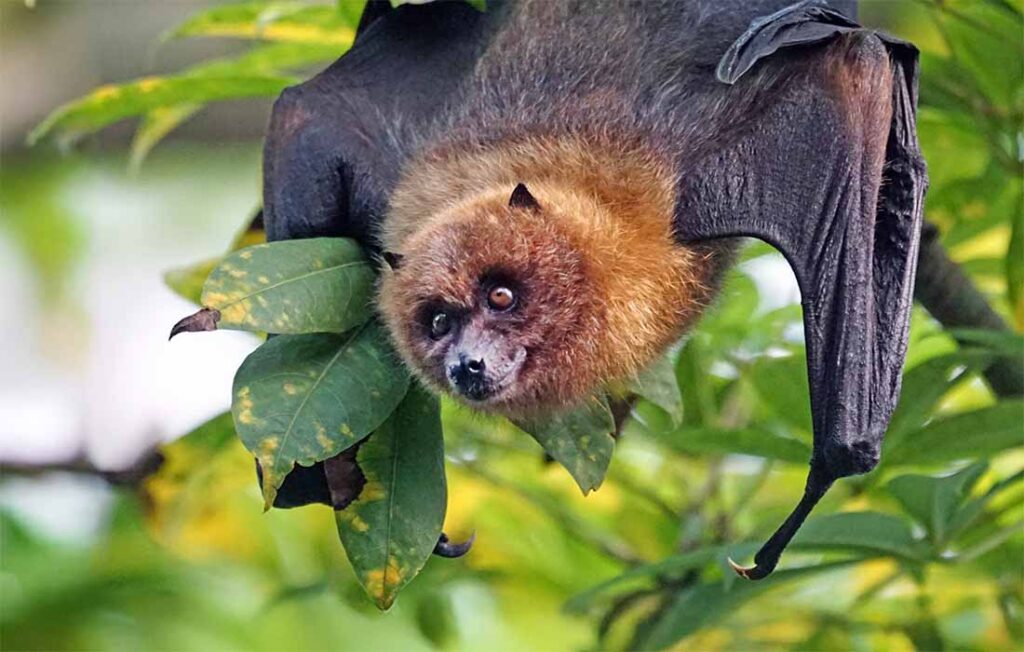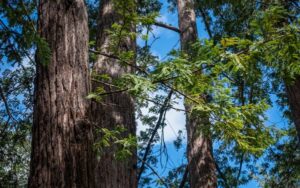By Micaela Jemison of EarthShare Nonprofit Partner Bat Conservation International; originally published in 2015; revised and updated in fall 2024
When October rolls around many people start to think of bats as keeping company with witches and ghosts. But in reality, bats have a lot more to do with the foods of Halloween, like candy corn, than the spooky spirit of the holiday.
Bats provide important pest control services for many of our agricultural crops including, walnuts, almonds, rice, chocolate, and coffee. One of the world’s most important crops, corn, has also been found to benefit from bats. A study funded by Bat Conservation International (BCI) confirmed that bats play a significant role in combating corn crop pests, preventing more than $1 billion in crop damages worldwide every year.
Most of this billion-dollar figure is attributed to the enormous appetite of our insect-eating bats. Insectivorous bats in North America are capable of eating up to two-thirds their bodyweight in insects per night. In the cornfields of Southern Illinois, where this two-year experiment was conducted, this is a great benefit to farmers as the bats consume large quantities of adult corn earworm moths. The larvae of the corn earworm moth cause billions of dollars’ worth of damage not only to corn but also cotton, tomatoes and many other crops. By eating the corn earworm moth, bats significantly reduce the direct damage to the corn and the necessity for costly insecticides.
The implication of these findings serves as great news for agriculture and bat conservation alike, stresses former BCI Executive Director Andrew Walker: “Corn is an essential crop for farmers on over 150 million hectares globally. This research shows that by protecting bat species and their habitats we are not only furthering conservation, but also helping to secure a vital food source for communities worldwide.”
Demonstrating the unique connections between the world of these fascinating flying mammals and our own is an important part of bat conservation. Sustainable bat conservation ultimately relies on people, inspired by the intrinsic value of bats not only for the environment but us humans as well. Conservation also relies on collaboration and local leadership.
There is no better example of this than the efforts to save the largest colony of bats in world at Bracken Cave in Texas. Home to more than 15 million Mexican free-tailed bats, Bracken is largest gathering of mammals in the world. The cave and 1458 acres of the surrounding Texas Hill Country is owned and protected by BCI.
However, this important maternity roost for the species became threatened in 2013 when 1,500 acres adjacent to Bracken Cave were slated for development into a high-density suburban neighborhood. Located in close proximity to the cave and directly under the bats’ nightly flight path, the proposed neighborhood threatened the bat colony’s existence. Joined by organizations like Taking Care of Texas, the Greater Edwards Aquifer Alliance, the City of San Antonio and the Texas chapter of the Nature Conservancy, BCI mobilized raised the $20.5 million to buy the additional 1,521 acres adjacent to the cave—one of the largest conservation achievements for bat conservation.
Learn more about Bat Conservation International on their website, Facebook, Instagram, X, and TikTok.
Save
Save




